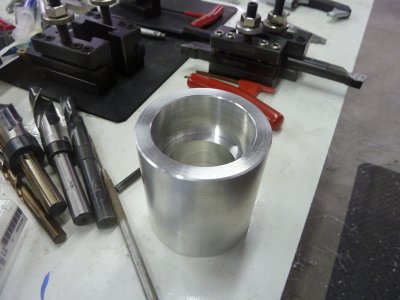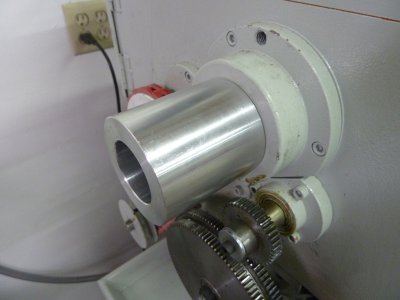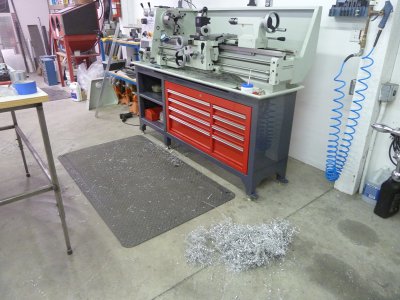you could cut yourself in the threads in the center 12" of the screw! I bought this mill as 400$ of scrap, it was used most of is industrial life in the center 8" of travel less in the next 12 " and almost none on the rest. I have used it most tward the ends but its time for some love!gaston, are you sure that the screws themselves are toast? you can buy new nuts from surpa machine tool on ebay, otherwise known as Acer
-
Welcome back Guest! Did you know you can mentor other members here at H-M? If not, please check out our Relaunch of Hobby Machinist Mentoring Program!
- Forums
- THE PROJECTS AREA
- PROJECT OF THE DAY --- WHAT DID YOU DO IN YOUR SHOP TODAY?
- Project of the Day Mega-Thread Archives
You are using an out of date browser. It may not display this or other websites correctly.
You should upgrade or use an alternative browser.
You should upgrade or use an alternative browser.
2016 POTD Thread Archive
- Thread starter sanddan
- Start date
- Joined
- Jul 3, 2015
- Messages
- 144
Made a Frankenstein throw out bearing holder for my trucks flathead engine T5 tranny combo. I took the stock Ford flathead bearing carrier, cut it shorter, turned and pressed in a stepped bushing and then pressed in a new Chevy throw out bearing. I used a Ram brand bearing and I was very impressed. No stamped metal, all heavy steel but it was so hard I had to grind off a flange that had to be removed because I couldn't cut it. Its a perfect fit and has the same length as the old setup. Now I can use a diaphragm style pressure plate.
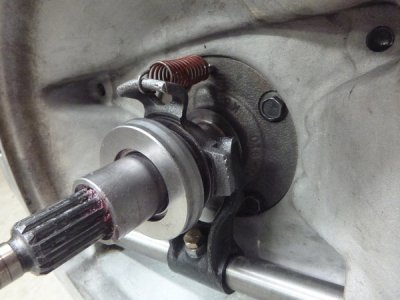
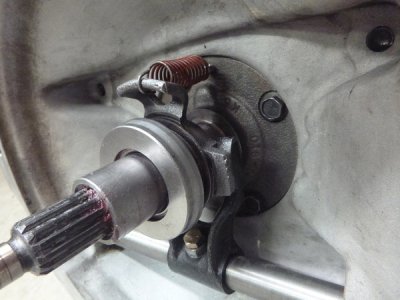
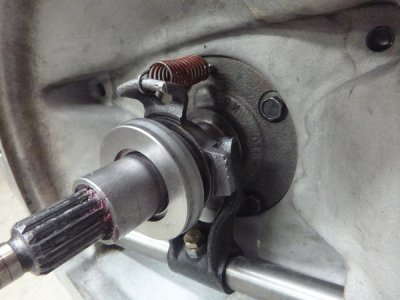
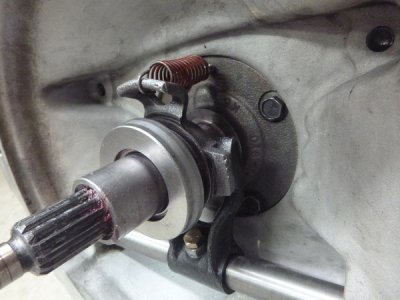
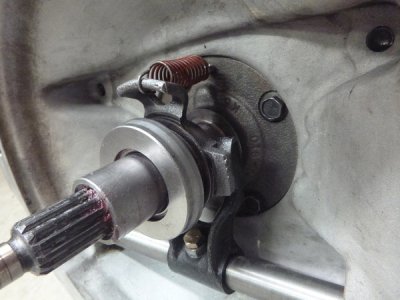
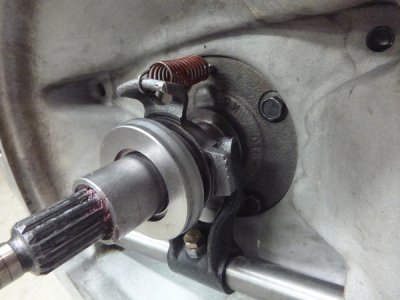






- Joined
- Nov 24, 2014
- Messages
- 3,184
Not exactly like an E-stop but does shut machine down with two options of breaking speeds (1 sec or 3-5 seconds). Its also ties in with the bypass momentary push button which when pushed allows machine to run regardless of proximity signal . The air gap is about 3mm, so nothing comes to contact. The safety micro switch (in case hall sensor fails) will result in E-stop and braking in 1 second as well as the E-stop mushroom button all other stops are controlled stops including the foot brake.
An example of using the by-pass would be, Say your boring a blind hole and the lathe stops at your designated depth, so you disengage the carriage travel (Y) but need to clean up the inside face. You would push the by-pass and machine would run for the clean up. Also handy for threading when you want to reverse direction.
The design is quite impressive. I showed a non machinist friend the lathe improvements which he then called it "smart lathe". It kinda is...
Thanks again Paco,
Thanks for the further explanation. Now I understand what's going on with the proximity sensor
Good looking (as always) adaptation of the new motor too.
- Joined
- Aug 19, 2013
- Messages
- 764
I wish I could have a day like that, my off switch is broken
I used to have that problem but I've allowed the flywheel to slow down a little. The rod bearings are starting to wear out.
- Joined
- Nov 23, 2014
- Messages
- 2,609
I picked up a 4” 3-jaw chuck years ago for my L&W dividing head. The chuck didn’t have a key (1/4” internal square), so for more years than I care to admit to have used a 12-point 5/16” socket as a wrench. Spent an hour this morning FINALLY making a key for the chuck.
Plan was to broach a ¼” square hole in a round, add a shaft held with a spring pin, add a T-handle with hex nuts on the ends of the handle. Nothing special about the dimensions, just convenience stock on hand.
I used a 1” round for the body, center drilled and drilled a 17/64” pilot hole for a ¼” square broach. Drilled the back side of the body with a ½” drill for the shaft (and reduce the depth of the ¼” broached hole). I set the key body on a bench block and broached the ¼” square hole using a 12-ton HF shop press.
Put the key body and shaft together and set the assembly in a V-block on my mill. Drilled the 1/8” spring pin hole and ¼” T-handle hole.
The T-handle is ¼” stock, threaded one end with a die. I bought a Shars 0-1” thread micrometer a few months ago, have been itching to try it out so the other end was single point threaded. Naturally it’d work just as well using a ¼” nut to check the thread depth, but at least now I can say I've used the thread mic!
Nuts were from 5/8” hex stock on hand. Yeah, one more item off from my “list of good intentions”! Sorry for all the pics, but for some reason my wife wasn't all that enthused about my project!
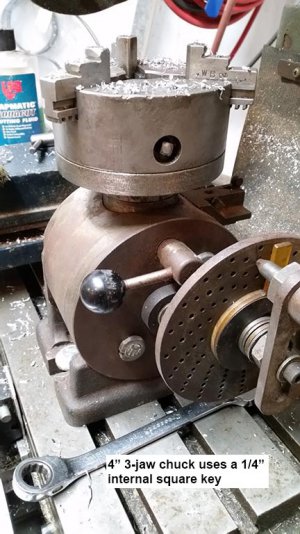
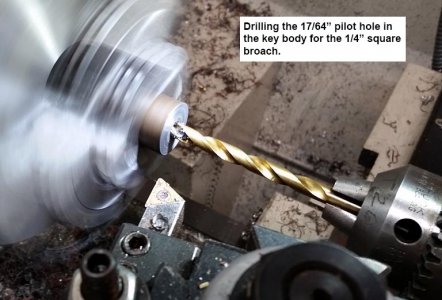
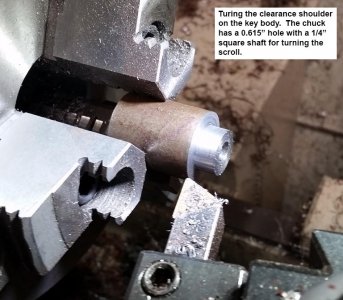
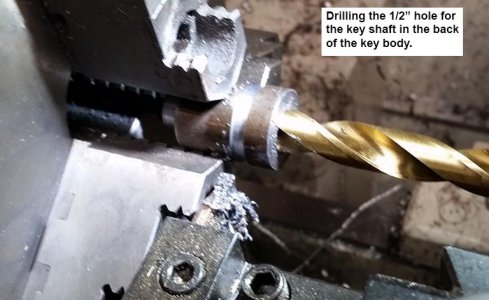
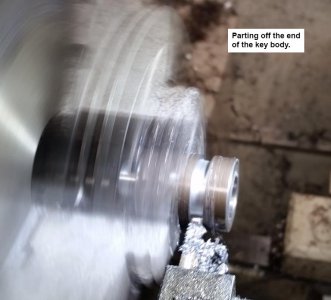
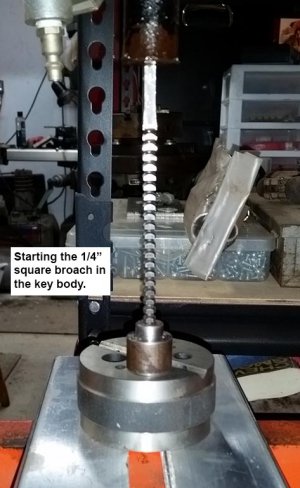
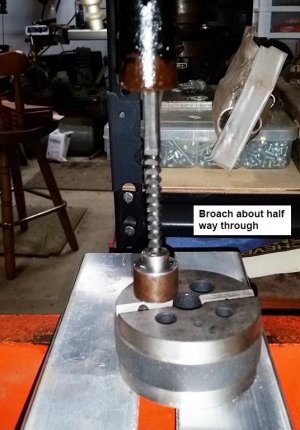
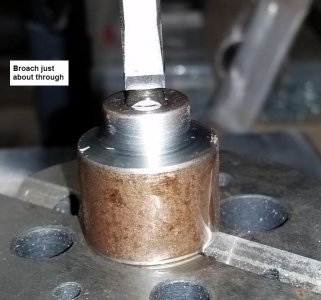
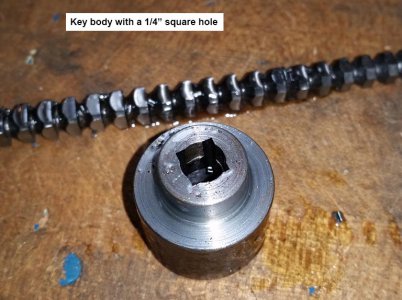
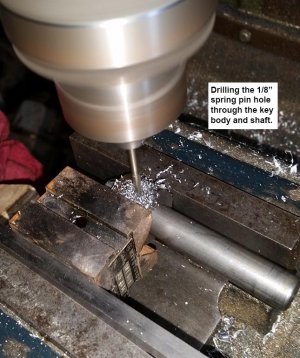
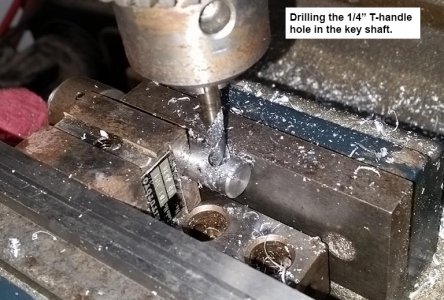
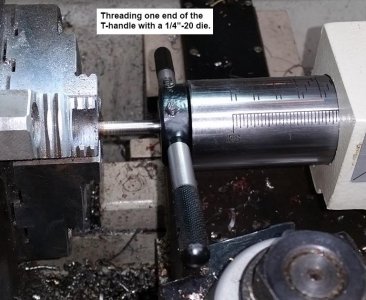
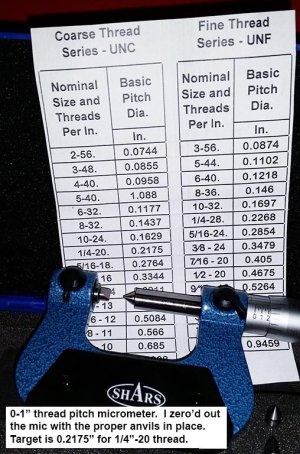
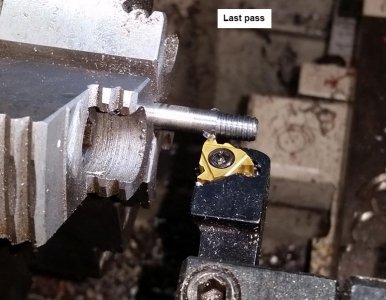
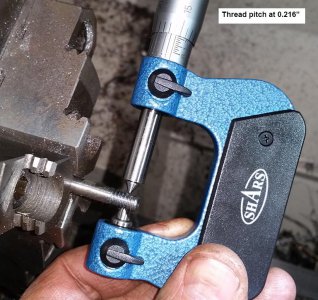
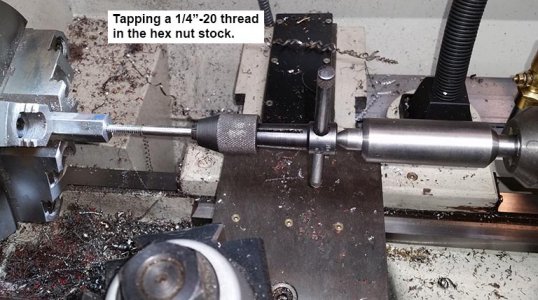
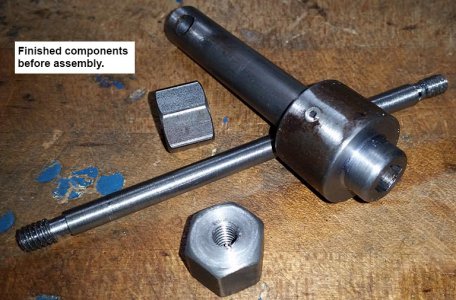
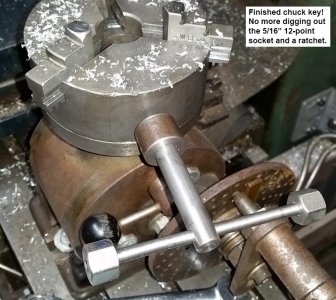
Plan was to broach a ¼” square hole in a round, add a shaft held with a spring pin, add a T-handle with hex nuts on the ends of the handle. Nothing special about the dimensions, just convenience stock on hand.
I used a 1” round for the body, center drilled and drilled a 17/64” pilot hole for a ¼” square broach. Drilled the back side of the body with a ½” drill for the shaft (and reduce the depth of the ¼” broached hole). I set the key body on a bench block and broached the ¼” square hole using a 12-ton HF shop press.
Put the key body and shaft together and set the assembly in a V-block on my mill. Drilled the 1/8” spring pin hole and ¼” T-handle hole.
The T-handle is ¼” stock, threaded one end with a die. I bought a Shars 0-1” thread micrometer a few months ago, have been itching to try it out so the other end was single point threaded. Naturally it’d work just as well using a ¼” nut to check the thread depth, but at least now I can say I've used the thread mic!
Nuts were from 5/8” hex stock on hand. Yeah, one more item off from my “list of good intentions”! Sorry for all the pics, but for some reason my wife wasn't all that enthused about my project!


















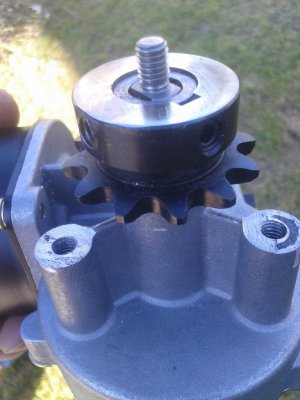 Yesterday's project: making a sprocket to motor shaft coupler. A fellow hobby-machinist member is building a rotating Christmas tree stand and has enlisted my machining support two times now.
Yesterday's project: making a sprocket to motor shaft coupler. A fellow hobby-machinist member is building a rotating Christmas tree stand and has enlisted my machining support two times now.Most recently, he has a motor with reduction gear, that delivers a 50rpm output on a 10mm shaft. This needs to drive a sprocket with a 5/8" hole.
Because of limited room to mount the motor, first step was to reduce the width of the sprocket hub. A quick file test, the sprocket was hardened, as would be expected. A belt/disk sander was used to reduce the hub by 0.070, that will help. But the sprocket side needed to be counterbored to clear the shaft housing and a step in the shaft. Despite the hardened state, I tried it in the lathe with a cheap carbide boring bar. Oh, a keyway in the sprocket would make this an interrupted cut. Just cutting a few thou at a time, eventually got it done without breaking the carbide.
The coupler was made from 5/8 steel rod, axially drilled for 10 mm, and radially drilled for 1/4-20 NC setscrews.
(And one more setscrew hole drilled and tapped through the sprocket hub with plain HSS drill and carbon steel tap, maybe it wasn't really hardened.
Greg
Last edited:
T
TOOLMASTER
Forum Guest
Register Today
Turning an oxygen bottle into a very heavy duty light...robbed the guts from and old DJ par light.
the plastic dip is a pain, but no biggie for the dynabrade
by the way since I added the hydraulic cylinder to my horizontal saw it cuts soooooo much better...this cut so straight I had only about .100 wobble on the end when I chucked it up to grind the od...before it would have been waaaaay crooked
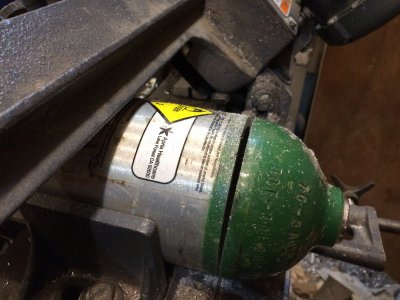
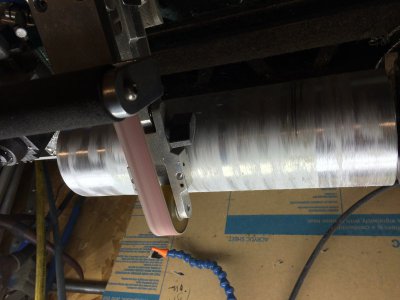
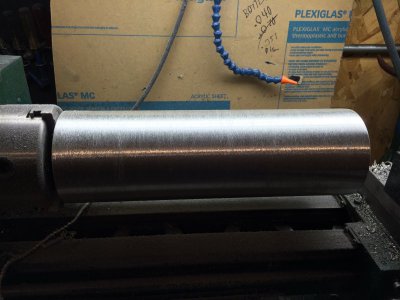
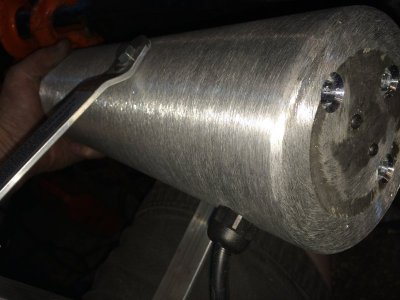
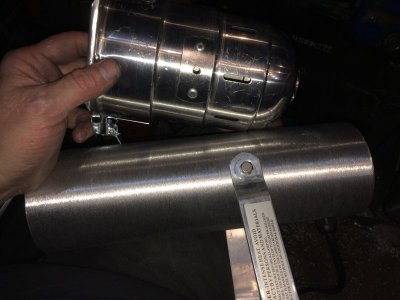
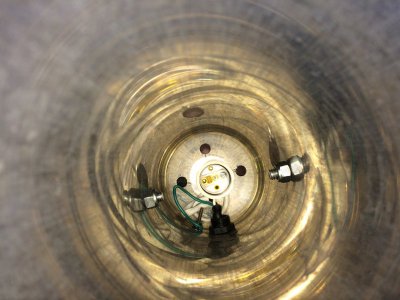
yes I do weird stuff
the plastic dip is a pain, but no biggie for the dynabrade
by the way since I added the hydraulic cylinder to my horizontal saw it cuts soooooo much better...this cut so straight I had only about .100 wobble on the end when I chucked it up to grind the od...before it would have been waaaaay crooked






yes I do weird stuff
Last edited by a moderator:
T
TOOLMASTER
Forum Guest
Register Today
only a couple pounds
all aluminum
all aluminum


